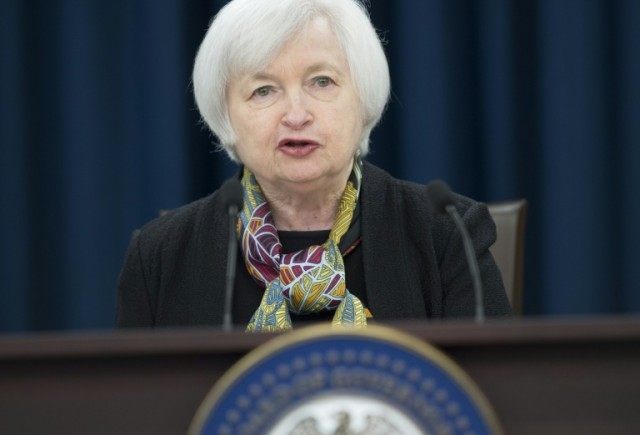The Federal Reserve has kept a watchful eye on labor markets but as it meets next week to chart interest rate policy, it would do well to recognize that inflation is heating up too.
Since the summer of 2014, falling gasoline prices have pulled down headline inflation—as measured by the consumer price index. However in other sectors of the economy, prices have been rising about 2 percent annually.
As oil prices fell, shale producers proved remarkably resilient and kept U.S. conventional oil production at record levels for many months, but now wells are depleting or shutting down altogether. Even with Iran coming back into the international marketplace with the lifting of western sanctions, the global oil market is likely skating near its bottom and will gradually recover—especially the second half of this year and next.
Gasoline prices have already started to rise—up about 40 cents per gallon since mid-February—and higher petroleum prices generally will filter thorough to cost structures in chemicals and other basic materials, airlines and other service activities. If that keeps up, overall consumer prices will rise at more than the Fed’s target of 2 percent a year and inflation could easily spring out of control.
The best antidote is for the Fed to gradually raise interest rates.
Consumers will absorb rising pump prices without cutting back spending in other areas of discretionary spending—such as new car purchases, home improvements, clothing and vacations—because they pocketed most of their savings from lower gasoline prices.
Hence the Fed can keep on track—raise interest rates a quarter point in June and another quarter point later in the year—without derailing the economic recovery or rattling financial markets.
The United States may be growing more rapidly than other industrialized countries but it has been slower than its major competitors—Japan, the United Kingdom and Germany—in returning employment—as measured by the percentage of working aged adults— to pre-financial crisis levels.
Smart machines—such as automated checkout at the grocery stores and other retailors—are the emerging strategy among larger retailers and other employers facing rising compensation costs—as mandated by rising health insurance premiums and Obamacare.
More broadly, the economy is on the brink of an artificial intelligence and robotics revolution with the potential to replace 90 percent of all occupations as we know them. The reality will not likely live up to these possibilities, but the pressures on employment from carpenters to college professors are obvious.
Other barriers to jobs creation include state and municipal land use and labor market regulations that are discouraging moderately priced apartment development and worker migration to bigger cities where the booming service economy offers the best opportunities.
Efforts to assist those left behind—expanded access to food stamps and Medicare, Obamacare subsidies and the negative income tax—can have an important negative incentive to take lower paying employment, especially in two-adult households. Hence it is no surprise that adult labor force participation is still well below pre-financial crisis levels.
The experiences of central banks in Europe and Japan indicate that radically low—even negative—interest rates don’t much boost lending, investment spending and economic growth. Instead, those damage banks, which are forced to pay interest on their excess holdings of cash to central banks but are unable to effectively pass along those costs to depositors, and encourage businesses to stash cash in company vaults rather than keeping funds at banks.
Overall the Fed, by keeping interest rates near zero for nearly 8 years, has done all it can to stimulate economic recovery, and normalizing rates by gradually raising the bench market federal funds rate is the best policy course.
Peter Morici is an economist and business professor at the University of Maryland, and a national columnist. He tweets @pmorici1

COMMENTS
Please let us know if you're having issues with commenting.